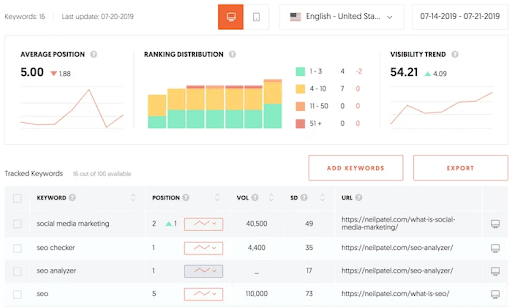In an increasingly digital world, the ability to communicate and transact quickly, securely, and accurately is essential.
For businesses engaged in supply chain management, retail, healthcare, manufacturing, and logistics, Electronic Data Interchange (EDI) has emerged as a critical tool for automating and streamlining operations.
At the heart of this transformation is EDI software, a powerful solution that enables companies to electronically exchange business documents in a standardized format.

Table of Contents
What is EDI?
Electronic Data Interchange (EDI) is the structured transmission of data between organizations using standardized electronic formats. This method replaces traditional paper-based communication, such as purchase orders, invoices, shipping notices, and other business documents, with digital alternatives. The main goal of EDI is to reduce manual input, minimize errors, speed up business processes, and increase overall efficiency.
What is EDI Software?
EDI software refers to a digital solution that facilitates the creation, translation, transmission, and receipt of EDI documents. It acts as a bridge between a company’s internal systems (like ERP or accounting software) and its trading partners. By using EDI software, businesses can automate data exchange and ensure compliance with industry standards, such as ANSI X12, EDIFACT, and others.
There are two primary types of EDI software:
- On-premise EDI Software – Installed on the company’s servers and maintained in-house. Offers high customization but often requires a dedicated IT team.
- Cloud-based EDI Solutions – Hosted by a third-party provider. These are scalable, cost-effective, and easier to implement for businesses of all sizes.
Key Features of EDI Software
To understand the value of EDI software, it’s important to explore the core features it typically offers:
- Data Translation: Converts internal data formats into EDI-compliant formats and vice versa.
- Integration with ERP Systems: Connects directly with systems like SAP, Oracle, or Microsoft Dynamics for seamless data flow.
- Compliance Management: Ensures documents adhere to required EDI standards and guidelines.
- Automation: Triggers workflows based on EDI document receipt or dispatch, reducing manual effort.
- Security: Implements encryption and secure communication protocols to protect sensitive business data.
- Audit Trails: Maintains logs of transactions for compliance and troubleshooting.
Benefits of Using EDI Software
Implementing EDI software offers a wide array of advantages:
1. Increased Efficiency
Manually entering data can be time-consuming and error-prone. By taking the time to learn edi platform capabilities, businesses can automate these tasks using EDI software, allowing them to process transactions faster and with fewer mistakes.
2. Cost Savings
Reducing paper use, postage, printing, and administrative tasks translates into significant cost savings. A study by the Aberdeen Group found that companies using EDI save an average of $1.50 per document compared to traditional methods.
3. Improved Accuracy
Human errors are common in manual data entry. EDI software minimizes these errors by automating the exchange and processing of documents.
4. Faster Business Cycles
EDI speeds up the order-to-cash cycle. Purchase orders, invoices, and shipping documents can be exchanged and processed in minutes rather than days.
5. Enhanced Partner Relationships
EDI improves communication and reliability between trading partners, making collaboration smoother and more predictable.
6. Regulatory Compliance
Many industries require adherence to strict data interchange standards. EDI software ensures compliance, helping companies avoid penalties and maintain good standing.
Industries That Rely on EDI Software
While EDI is used across many sectors, some industries are particularly reliant on it:
- Retail: EDI enables retailers to manage orders, inventory, and shipments efficiently.
- Healthcare: Used for insurance claims, eligibility verification, and medical billing.
- Manufacturing: Automates procurement, production planning, and shipping logistics.
- Electronics supply chain software: Critical for managing the complex and fast-paced supply chains in electronics manufacturing and distribution.
- Logistics and Transportation: Facilitates tracking, billing, and route planning.
- Automotive: Used to manage complex supply chains with just-in-time (JIT) inventory systems.
Choosing the Right EDI Software
Selecting the right EDI solution depends on several factors, including business size, budget, industry requirements, and the complexity of your supply chain. Here are a few criteria to consider:
- Scalability: Can the software grow with your business?
- Integration Capabilities: Does it integrate easily with your existing ERP or accounting systems?
- Customer Support: Does the vendor offer responsive, knowledgeable support?
- Ease of Use: Is the interface user-friendly for both IT staff and business users?
- Cost Structure: Are the fees transparent and aligned with your budget (subscription-based, pay-per-use, etc.)?
- Reputation and Reviews: What do other customers say about the provider?
Challenges in EDI Implementation
While EDI software delivers substantial benefits, the implementation process isn’t always straightforward. Businesses may face challenges such as:
- Complex Setup: Mapping internal systems to EDI formats can be technically demanding.
- Training Requirements: Employees may need training to use new systems effectively.
- Vendor Coordination: Ensuring all trading partners are EDI-compliant can take time.
- Ongoing Maintenance: Keeping up with changing standards and partner requirements may require regular updates.
Partnering with an experienced EDI provider or consultant can help alleviate many of these challenges.
The Future of EDI Software
As digital transformation accelerates, EDI software continues to evolve. Modern solutions are increasingly incorporating AI, machine learning, and real-time analytics to enhance decision-making and automate exception handling. Additionally, APIs (Application Programming Interfaces) are being integrated into EDI platforms to provide more flexibility and faster data exchange between cloud services.
Another trend is the growth of hybrid EDI solutions, which combine traditional EDI with API-based data exchange for greater versatility and broader reach.
Sustainability is also becoming a consideration. By eliminating paper-based processes and reducing physical deliveries (through optimized logistics), EDI contributes to eco-friendly business practices.
Conclusion
In today’s fast-paced, interconnected global economy, having the right tools to manage data exchange efficiently is critical. EDI software empowers businesses to streamline operations, reduce errors, enhance compliance, and build stronger relationships with trading partners. Whether you’re a small business just entering the digital supply chain or a large enterprise managing complex networks, investing in a robust EDI solution can be a game-changer for operational success.
As technology advances, the role of EDI software will only become more significant, especially as companies seek smarter, faster, and greener ways to do business.
























